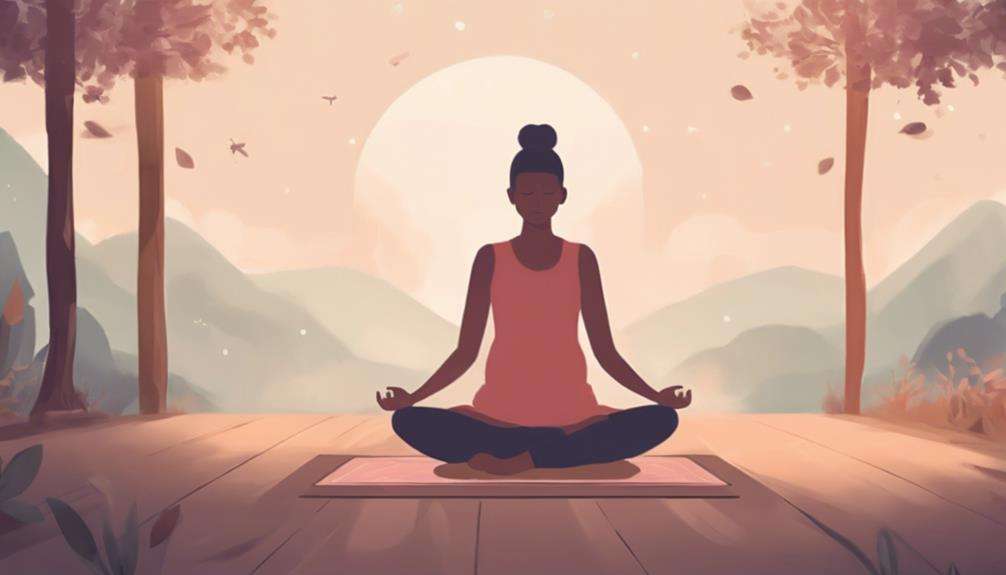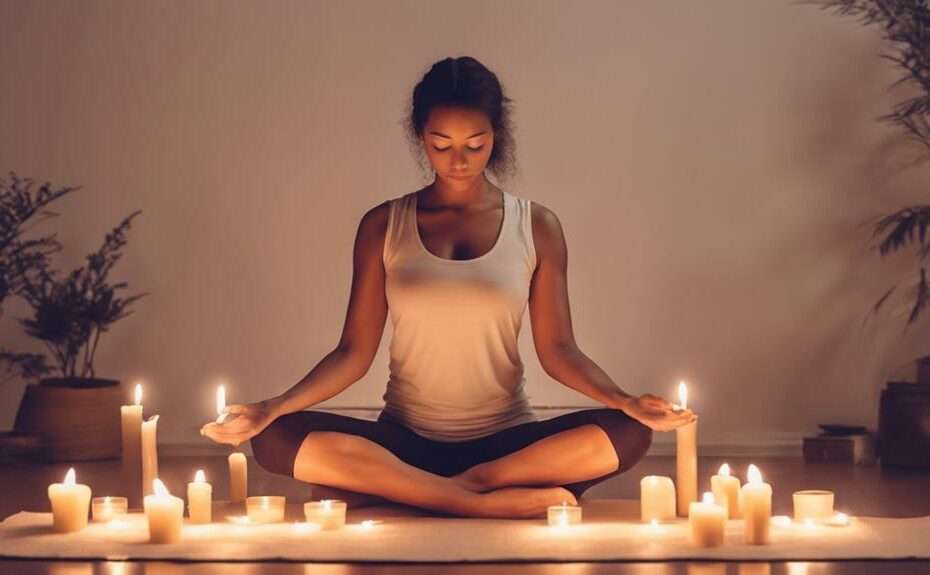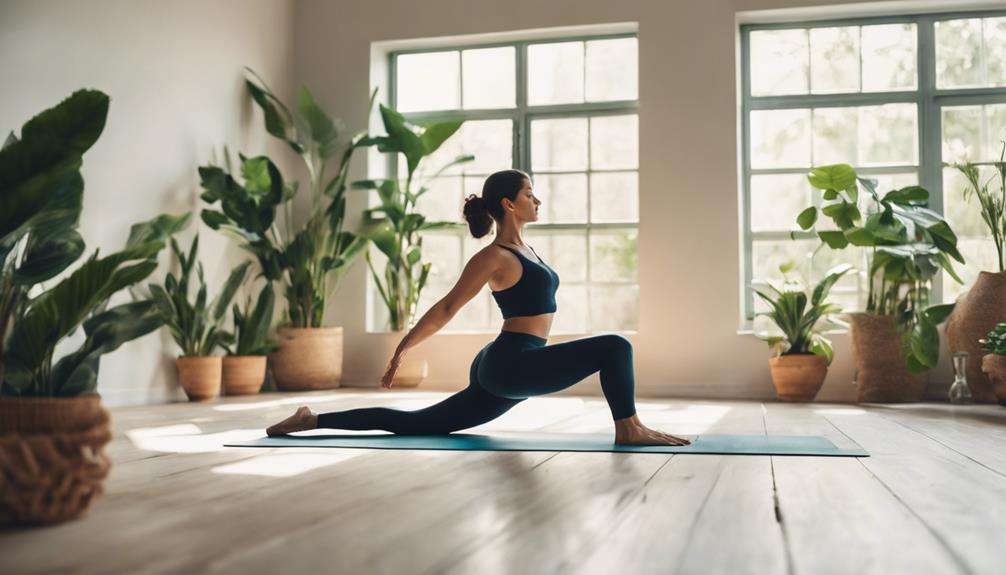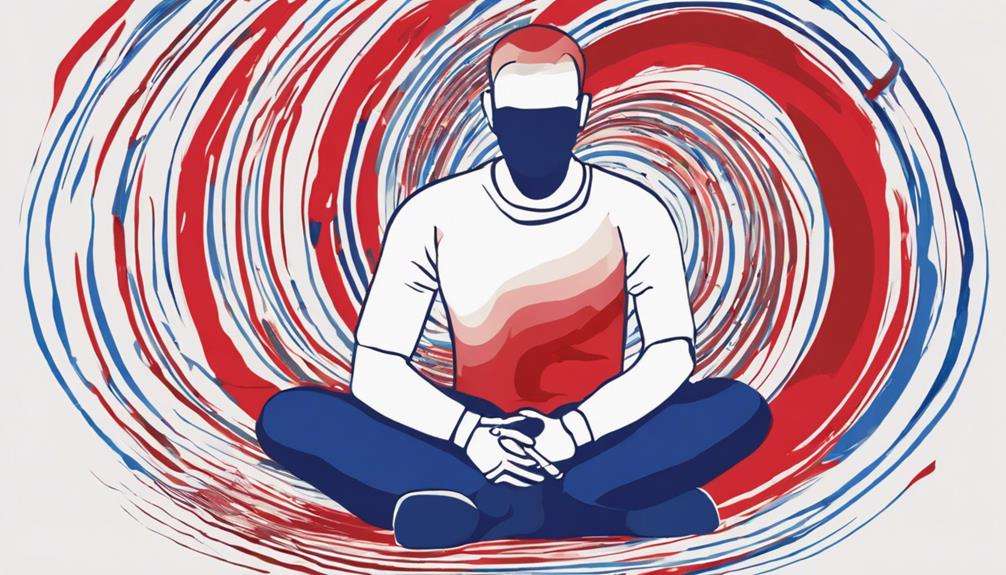When it comes to lowering your blood pressure through relaxation, the old saying 'calm seas never made a skilled sailor' rings true.
You might be surprised at the power of simple relaxation techniques in managing your blood pressure. From meditation to yoga and deep breathing exercises, these methods offer a holistic approach to improving your cardiovascular health.
But how exactly do these techniques work their magic on your blood pressure? Let's explore some effective strategies that can help you sail through the rough waters of stress and high blood pressure.
Key Takeaways
- Meditation, PMR, deep breathing, and yoga induce relaxation responses for lowering blood pressure.
- Regular practice of these techniques reduces stress, inflammation, and promotes overall well-being.
- Combining relaxation techniques with physical activity enhances blood pressure control effectiveness.
- Mindfulness, transcendental meditation, PMR, deep breathing, and yoga are holistic approaches for managing blood pressure.
Benefits of Meditation for Blood Pressure
Meditation, particularly mindfulness and transcendental techniques, demonstrates a clinically proven ability to effectively reduce high blood pressure levels. Regular practice of meditation has been linked to a reduction in stress-related disorders and an enhancement of relaxation responses. Studies indicate that engaging in meditation can result in decreased inflammation, widened blood vessels, and lowered blood pressure.
Mindfulness meditation, specifically when practiced twice daily for 10-20 minutes, has shown significant benefits in lowering blood pressure. By incorporating meditation into your daily routine, you can actively contribute to the improvement of your cardiovascular health, stress reduction, and overall well-being. This ancient practice offers a natural and impactful way to manage blood pressure levels and promote a healthier lifestyle.
Embracing meditation as a tool for stress reduction can pave the way for a calmer mind and a healthier heart.
Progressive Muscle Relaxation Techniques
From mindfulness practices, Progressive Muscle Relaxation (PMR) is a targeted technique involving the systematic tension and release of muscle groups to reduce overall tension and promote relaxation, demonstrating effectiveness in stress reduction and potential blood pressure management. By intentionally tensing and then relaxing specific muscle groups, PMR helps individuals become more attuned to their body's responses and aids in lowering stress levels. This method of muscle relaxation has been linked to lower blood pressure through its ability to induce a state of calmness and reduce overall tension in the body.
Research indicates that incorporating PMR into a daily routine can't only lead to better stress management but also contribute to improved sleep quality, reduced anxiety, and enhanced well-being. Through the practice of PMR, individuals can learn to recognize and release muscle tension, which in turn can help in maintaining lower blood pressure levels. Embracing Progressive Muscle Relaxation techniques may be a valuable addition to your relaxation practices for better stress reduction and potential blood pressure control.
Deep Breathing Exercises for BP Management

Engage in deep breathing exercises as an important approach for managing blood pressure effectively. Deep breathing has been shown to lower heart rate, reduce blood pressure, and increase oxygen levels in the body.
By calming the nervous system and improving respiratory function, these exercises promote relaxation and aid in blood pressure management. Deep breathing can also help decrease stress-induced responses, contributing to lower blood pressure levels.
Through facilitating oxygen exchange, deep breathing plays an important role in effectively lowering blood pressure. Incorporating deep breathing exercises into your daily routine can have significant benefits for your overall cardiovascular health.
Remember to practice deep breathing regularly to experience the positive impact it can have on your blood pressure and overall well-being. Start incorporating deep breathing into your daily routine today to start reaping these benefits and promoting a healthier blood pressure.
Understanding Yoga for Lowering BP
Incorporating yoga into your routine can greatly contribute to lowering blood pressure by enhancing overall mind-body awareness and promoting relaxation. Yoga sessions typically involve meditation, breathing exercises, and muscle-stretching postures, all of which have been shown to reduce stress, improve flexibility, and enhance cardiovascular health. This combination of practices not only promotes relaxation and mindfulness but also aids in lowering blood pressure levels.
Regular practice of yoga can help improve your overall mind-body harmony, leading to a reduction in blood pressure. Studies have demonstrated that yoga not only lowers blood pressure but also enhances physical strength and balance. By incorporating meditation, controlled breathing, and muscle-relaxing postures, yoga serves as a holistic approach to improving health and well-being, making it a valuable tool in the management of hypertension.
Incorporating Mindfulness for Blood Pressure

When considering mindfulness for blood pressure management, focusing on mindful breathing techniques and meditation can be beneficial for relaxation. These practices have been shown to help reduce stress and improve emotional well-being, ultimately contributing to lower blood pressure levels.
Incorporating mindfulness into your daily routine can support overall cardiovascular health and aid in blood pressure control.
Mindful Breathing Techniques
Utilizing mindful breathing techniques can effectively help regulate blood pressure by fostering relaxation and reducing stress-related factors. By incorporating mindfulness into breathing exercises, individuals can focus on their breath patterns, staying present in the moment. This focused attention calms the mind, alleviates stress, and ultimately contributes to lower blood pressure levels.
Research has demonstrated that practicing mindful breathing can lead to significant reductions in both systolic and diastolic blood pressure readings. These techniques aren't only accessible and easy to learn but can also be incorporated into daily routines, making them practical for promoting relaxation and blood pressure control.
Enhancing self-awareness and emotional regulation through mindful breathing can positively impact overall blood pressure management.
Meditation for Relaxation
Mindful breathing techniques pave the way for enhancing relaxation and regulating blood pressure, setting the stage for delving into the benefits of mindfulness meditation for cardiovascular health. Meditation has been found to lower blood pressure and reduce stress-related disorders. Regular practice of mindfulness meditation can lead to lower inflammation levels and wider blood vessels. It's recommended to engage in mindfulness meditation twice daily for 10-20 minutes to experience these benefits fully.
Combining Relaxation Techniques for BP
Combining relaxation techniques such as breathwork, meditation, and progressive muscle relaxation offers a multifaceted approach to managing high blood pressure.
By integrating these methods, you can harness the benefits of each technique to create a more all-encompassing and effective strategy for lowering blood pressure.
The synergy between breathwork for BP, meditation benefits, and progressive muscle relaxation can lead to improved cardiovascular health and reduced stress levels.
Breathwork for BP
Implementing breathwork alongside other relaxation techniques can be a potent strategy for effectively managing blood pressure levels. Deep breathing exercises, a key component of breathwork, can greatly lower heart rate and blood pressure by enhancing oxygen exchange and calming the nervous system.
Controlled breathing techniques, part of breathwork practices, help regulate the autonomic nervous system, leading to decreased blood pressure and improved cardiovascular health. Studies suggest that combining breathwork with meditation and yoga can have a synergistic effect on lowering blood pressure levels.
Meditation Benefits
Utilizing meditation techniques alongside other relaxation practices can greatly benefit individuals seeking to manage their blood pressure effectively. Meditation, such as mindfulness and transcendental meditation, triggers a relaxation response that helps reduce high blood pressure and stress-related disorders.
Regular meditation practice can lower inflammation, widen blood vessels, and improve overall cardiovascular health. To experience the blood pressure-lowering benefits, it's recommended to meditate twice daily for 10-20 minutes. Meditation promotes relaxation, mental clarity, and overall well-being, which can contribute to lower blood pressure.
When combined with other relaxation techniques like deep breathing exercises and yoga, meditation can further support blood pressure management by enhancing the relaxation response in the body.
Progressive Muscle Relaxation
Progressive Muscle Relaxation is a structured technique that involves systematically tensing and relaxing muscle groups to promote deep relaxation and aid in managing blood pressure effectively. This method can help lower stress levels, reduce muscle tension, and improve sleep quality.
Research indicates that Progressive Muscle Relaxation is beneficial for managing chronic pain and promoting overall relaxation. By combining muscle relaxation with breathing exercises and mental imagery, individuals can enhance the effectiveness of this technique.
The practice of Progressive Muscle Relaxation induces a state of physical and mental calmness, making it a valuable tool in lowering blood pressure. Consider incorporating this technique into your daily routine to experience its positive effects on both your physical and mental well-being.
Implementing Stress Reduction Through Yoga
Regular practice of yoga can greatly reduce stress levels and improve flexibility and balance, all of which play an important role in lowering blood pressure. Yoga is a holistic approach that incorporates meditation, breathing exercises, and muscle-stretching postures, all of which are beneficial for managing high blood pressure.
The mindfulness cultivated through yoga can help lower blood pressure by promoting cardiovascular health and increasing awareness of the mind-body connection. This mind-body awareness aids in stress reduction, a key factor in lowering blood pressure levels.
Studies have shown that regular yoga sessions not only target physical well-being but also mental clarity, which can positively impact blood pressure regulation. By integrating mindfulness practices and physical movement, yoga provides a thorough approach to stress reduction that can contribute significantly to lowering blood pressure and improving overall cardiovascular health.
Incorporating yoga into your routine can be a valuable tool for managing stress and promoting better blood pressure control.
Frequently Asked Questions
What Relaxation Techniques Bring Blood Pressure Down?
To bring blood pressure down, try guided meditation and deep breathing. Progressive muscle relaxation and biofeedback are effective too. Mindfulness practices and aromatherapy techniques can also help. Practice these methods regularly for best results.
What Are the Techniques for Lowering Blood Pressure?
Lower your blood pressure with meditation techniques, stress management, and deep breathing exercises. These methods induce a relaxation response, decrease anxiety, and promote physical and mental calmness. Incorporate them into your routine for a healthier you.
How Do You Relax for Blood Pressure Readings?
To relax for blood pressure readings, start by closing your eyes and finding a quiet spot. Focus on deep breathing, practice meditation, use progressive muscle relaxation techniques, and engage in guided imagery to calm your mind and body.
What Lowers Blood Pressure by Relaxing Blood Vessels?
To lower blood pressure by relaxing blood vessels, focus on meditation benefits, specific yoga poses, and deep breathing exercises. These techniques increase nitric oxide levels, promoting vessel relaxation and improved cardiovascular health. Practice regularly for best results.
Conclusion
To summarize, integrating relaxation techniques such as meditation, progressive muscle relaxation, deep breathing exercises, and yoga into your daily routine can effectively lower blood pressure and improve overall cardiovascular health.
By practicing these techniques consistently, you can promote a sense of calmness, reduce stress, and enhance your well-being.
Remember, taking proactive steps to manage stress and cultivate relaxation can have a significant impact on your blood pressure levels and overall health outcomes.






